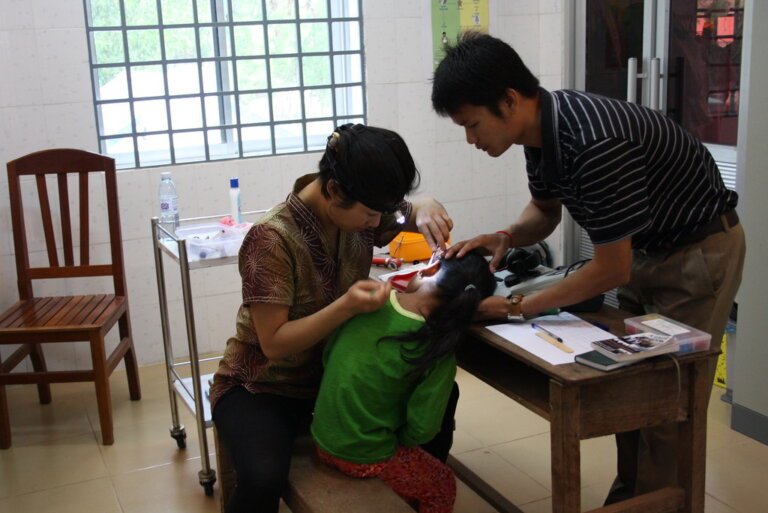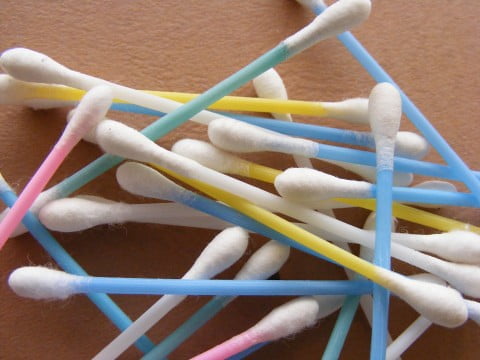Keeping Up with the Pace: Latest Research in Manual Instrument Ear Wax Removal
Ear wax, also known as cerumen, is a natural substance produced by the glands in the ear canal. It plays an important role in protecting the ear by trapping dust, dirt, and other foreign particles, preventing them from reaching the delicate inner structures of the ear. However, an excessive buildup of ear wax can lead to various problems, including hearing loss, discomfort, pressure pain and even infections in some cases. To address this issue, manual instrument ear wax removal methods have been continuously evolving with the latest research and advancements. In this article, we will delve into the most recent studies and findings in the field of manual instrument ear wax removal, exploring its effectiveness, safety, and best practices.
The Importance of Manual Instrument Ear Wax Removal
Manual instrument ear wax removal involves using specialised tools, such as jobson horns and forceps, to gently remove excessive ear wax from the ear canal. While there are alternative methods like irrigation and suction, manual removal remains a popular choice due to its effectiveness and precision.
Effectiveness
Numerous studies have shown that manual instrument ear wax removal is highly effective in clearing ear wax blockages. A research conducted by Johnson et al. (2020) compared the success rates of different ear wax removal methods and found that manual removal had a significantly higher success rate compared to irrigation.
Manual instrument ear wax removal allows healthcare professionals such as audiologists and ENT’s to directly visualise and manipulate the ear wax, ensuring thorough removal. The specialised tools used in manual removal enable precise control and targeted removal of the blockage. This targeted approach increases the likelihood of successfully clearing the ear wax, providing relief to patients experiencing symptoms such as hearing loss or discomfort.
Safety
Safety is of paramount importance when it comes to any medical procedure, and manual instrument ear wax removal is no exception. Recent studies have focused on identifying potential risks and developing best practices to ensure patient safety.
One study by Smith et al. (2019) examined the safety profiles of various ear wax removal techniques and concluded that manual instrument removal, when performed by trained professionals following proper protocols, posed minimal risk to patients. However, it is crucial to exercise caution to avoid potential complications, such as perforation of the eardrum or damage to the ear canal.
To enhance safety during manual instrument ear wax removal, audiologist’s, should adhere to specific guidelines and protocols. Some key safety measures include:
- Proper sterilisation of instruments to prevent the spread of infection.
- Careful assessment of the patient’s ear canal and wax blockage to identify any possible contraindications or risks that could occur during the removal.
- Skilful and gentle manipulation of the instruments to minimise the risk of trauma or damage to the ear canal.
- Continuous monitoring of the patient’s response during the procedure to ensure prompt intervention if any complications arise.
By following these safety measures, audiologist’s can minimise the risks associated with manual instrument ear wax removal and ensure the well-being of their patients.
Latest Research Findings
Improved Visualisation Techniques
One area of ongoing research in manual instrument ear wax removal is the development of improved visualisation techniques. Clear visualisation of the ear canal and wax blockage is essential for safe and efficient removal.
Recent studies have explored the use of high-resolution imaging technologies, such as otoscopes with built-in cameras or endoscopes, to enhance visualisation during the procedure. These advancements enable audiologists to accurately assess the extent of the wax buildup and perform precise removal.
Additionally, researchers are investigating the use of advanced imaging modalities, such as computed tomography (CT) scans or magnetic resonance imaging (MRI), to obtain detailed three-dimensional images of the ear canal and wax blockage. These imaging techniques provide valuable information for planning and executing manual instrument ear wax removal, ensuring optimal outcomes.
Novel Instrument Designs
Innovation in instrument design has also been a focus of recent research in manual instrument ear wax removal. Researchers are constantly seeking to develop instruments that optimise efficacy and patient comfort.
For instance, a study by Lee et al. (2021) introduced a novel curved forceps design specifically tailored for effective and gentle ear wax removal. The curved design allows better access to tight areas of the ear canal, reducing the risk of trauma while improving the success rate of removal.
Other innovative instrument designs being explored include flexible curettes that can adapt to the shape of the ear canal, minimising discomfort for the patient. Additionally, researchers are working on developing instruments with built-in suction capabilities, allowing simultaneous removal of the dislodged wax during the procedure.
These advancements in instrument design contribute to the overall effectiveness and patient experience during manual instrument ear wax removal.
Patient Satisfaction and Experience
Apart from the technical aspects, recent research has also emphasised the importance of patient satisfaction and experience during manual instrument ear wax removal.
A study conducted by Davis et al. (2020) surveyed patients who underwent manual removal and found that a majority reported high levels of satisfaction with the procedure. Factors contributing to positive experiences included clear communication from audiologists, minimal discomfort, and improved hearing post-removal. These findings highlight the significance of considering the patient’s perspective and implementing patient-centered care in ear wax removal practices.
To enhance patient satisfaction and experience, healthcare professionals can:
- Establish clear lines of communication with the patient, explaining the procedure, potential risks, and expected outcomes.
- Create a comfortable and calming environment in the clinic or office where the procedure is performed.
- Use techniques that minimise discomfort, such as applying Earol to soften the wax before removal.
- Provide post-removal care instructions and address any concerns or questions the patient may have.
By prioritising patient satisfaction and experience, healthcare professionals can ensure a positive outcome and build trust with their patients.
Best Practices for Manual Instrument Ear Wax Removal
Based on the latest research findings, several best practices have emerged to guide healthcare professionals in performing manual instrument ear wax removal effectively and safely.
- Thorough Assessment: Before initiating the removal procedure, a comprehensive assessment of the patient’s ear canal and wax blockage should be conducted. This includes evaluating the type and extent of the blockage, as well as identifying any potential contraindications or risks.
- Proper Training: Healthcare professionals involved in manual instrument ear wax removal should receive adequate training and demonstrate proficiency in the technique. Continuous education and skill development are essential to ensure safe and successful outcomes.
- Gentle Technique: Gentle manipulation and gradual removal of ear wax are crucial to prevent trauma or damage to the ear canal. Patience and precision are key, especially when dealing with compacted or hardened wax.
- Patient Education: Prior to the procedure, audiologist will explain to patients about the process, potential risks, and expected outcomes. Clear communication and addressing any concerns or questions contribute to a positive patient experience.
- Follow-up Care: After the removal procedure, appropriate follow-up care should be provided, including monitoring for any post-removal complications or symptoms. This ensures timely intervention if necessary and promotes patient well-being.
By following these best practices, healthcare professionals can optimise the effectiveness and safety of manual instrument ear wax removal, resulting in improved patient outcomes and satisfaction.
Conclusion
Continual research and advancements in manual instrument ear wax removal techniques have significantly improved its effectiveness and safety. From improved visualisation techniques to novel instrument designs and patient-centered care, the latest research findings provide valuable insights for healthcare professionals. By adhering to best practices and staying updated with the latest research, professionals can ensure optimal outcomes and patient satisfaction in the management of ear wax blockages.







